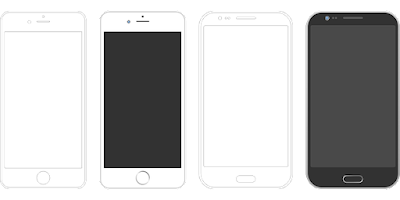
21 Jul Three Ways to Create Your Own Mobile App
I’m taking the week off to do a bunch of fun things with my kids. While I’m away the most popular posts of the year so far will reappear.
Since the start of the year I’ve answered about a dozen emails from readers who are interested in creating mobiles apps either by themselves or with their students. In most cases I’ve recommended one of the following three tools.
In this video I demonstrate two ways to use Glide Apps to create your own mobile app. The first method is to pick one of the Glide Apps templates and then modify the information within the template. The second method is to start from scratch with a blank Google Sheet. In my demonstration of the second method I explain and show how you can include maps and other multimedia elements.
MIT App Inventor
If you want to create a fully functional Android app, the MIT App Inventor is the place to start. The MIT App Inventor works in your web browser (Chrome is recommended). The only download that is required for App Inventor 2 is the optional emulator. The emulator allows people who don’t have Android devices to text their apps on their desktops. If you have an Android device then the emulator is not required and you don’t need to worry about installing it. MIT provides excellent support documentation and curriculum for new users. My tutorial on how to use the MIT App Inventor is embedded below.
Thunkable
If you want to create an iOS app, Thunkable provides a way to do that in a manner that is very similar to that of the MIT App Inventor. It uses framework of using jigsaw-like pieces that have commands labeled on them. Your job is to put the pieces together to make your apps work. Thunkable offers detailed written tutorials and video tutorials. A playlist of tutorials for beginning app designers is embedded below.
New course starting July1st! 25 Search Strategies You Need to Know!
I’m taking the week off to do a bunch of fun things with my kids. While I’m away the most popular posts of the year so far will reappear.
Since the start of the year I’ve answered about a dozen emails from readers who are interested in creating mobiles apps either by themselves or with their students. In most cases I’ve recommended one of the following three tools.
Glide AppsGlide Apps enables anyone who can make a spreadsheet in Google Sheets to create his or her own mobile app. If that sounds simple, that’s because it is just that simple. The headers that you put into your spreadsheet and the data that you enter into your spreadsheet is used by Glide to generate a mobile app for you that will work on Android and iOS devices.In this video I demonstrate two ways to use Glide Apps to create your own mobile app. The first method is to pick one of the Glide Apps templates and then modify the information within the template. The second method is to start from scratch with a blank Google Sheet. In my demonstration of the second method I explain and show how you can include maps and other multimedia elements.
MIT App InventorIf you want to create a fully functional Android app, the MIT App Inventor is the place to start. The MIT App Inventor works in your web browser (Chrome is recommended). The only download that is required for App Inventor 2 is the optional emulator. The emulator allows people who don’t have Android devices to text their apps on their desktops. If you have an Android device then the emulator is not required and you don’t need to worry about installing it. MIT provides excellent support documentation and curriculum for new users. My tutorial on how to use the MIT App Inventor is embedded below.
Thunkable
If you want to create an iOS app, Thunkable provides a way to do that in a manner that is very similar to that of the MIT App Inventor. It uses framework of using jigsaw-like pieces that have commands labeled on them. Your job is to put the pieces together to make your apps work. Thunkable offers detailed written tutorials and video tutorials. A playlist of tutorials for beginning app designers is embedded below.
New course starting July1st! 25 Search Strategies You Need to Know! Computer Science, DIY Apps, Free Technology For Teachers, how to, mobile appsRead More
Computer Science, DIY Apps, Free Technology For Teachers, how to, mobile appsRead More


Sorry, the comment form is closed at this time.